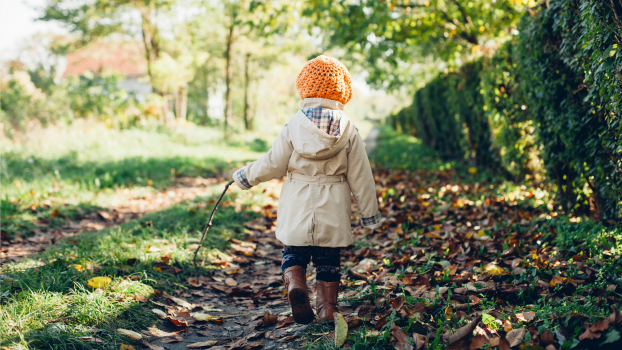
Sound walks can be done anywhere and at anytime: inside or outside and in the morning, the afternoon, or the evening. They can be done individually, with a few people, or with a group. Sound walks allow children and adults to put their other senses to the side and focus solely on listening. They allow children to become mindful of their surroundings while developing important sensory awareness skills.
What is a Sound Walk?
Take time to stop for a minute and listen. The sounds that are overlooked and not normally heard on a daily basis become more prevalent. The birds chirping in the morning, pages of a book turning in the classroom, or the buzz of a bee flying by can now be heard. It can open up a whole new world of sounds and vocabulary words for children to begin to become familiar with.
Putting together a collection of items that make different noises is a great way introduce sounds to preschoolers. From zipping zippers and animal noises to musical instruments and jingling keys, children will enjoy discovering soft sounds, loud sounds, short sounds, and long sounds. After the introduction of a variety of noises, follow up with a sound walk. Here are few ideas for activities to do while sound walking:
- Create a picture list of sounds children are likely to hear while focusing on listening both indoors and outdoors. Noises such as a dog barking, a car driving by, or a squirrel rustling nearby can be incorporated into a checklist. As they hear the sounds, they can check it off the list.
- Take students on a short no-talk sound walk either in school or outside. Afterwards, have the children sit and take turns talking about what they heard.
- Play an I-SPY game searching for objects or animals that make noises. Have preschoolers point them out as they see them. Ask the children to then make the sound that can be heard from that object or animal.
- Create a sound story with early learners. Have children participate in a story telling session about their sound walk. As they talk about what they heard, have them provide the noise or sound that goes with that object or animal. For example, when a bird is mentioned, everyone must respond with “chirp, chirp,” and so on.
- Walk outside to a nice open area where toddlers can find a special listening place. They can sit in the grass, lie down on a blanket, or listen however and wherever they are most comfortable. Try to have them close their eyes as it helps them to listen better. Encourage children to listen for at least one minute. After that minute, start a discussion about what they heard. Listen again and ask if they can tell where the sounds are coming from. Try to see if they can follow the sound to its source.
Sound walks are beneficial to children of all ages as they hear the different noises around them. Preschoolers will be introduced to key concepts such as observing, classifying, comparing and communicating. They will also be presented with new vocabulary terms like quiet, noisy, loud and soft. Building sensory and language development, sound walks also help children to learn and discover new listening skills.